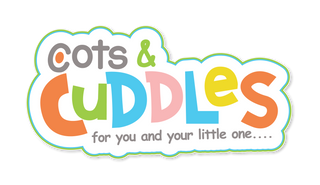Introduction:
Tantrums refer to intense emotional outbursts typically exhibited by toddlers and young children. They are characterized by displays of frustration, anger, sadness, or a combination of these emotions. During a tantrum, a child may scream, cry, kick, flail their limbs, throw objects, or engage in other disruptive behaviors. Tantrums are a normal part of a child's development, although they may continue beyond this age range. They often arise from the child's increasing desire for independence and their struggle to effectively communicate their needs and desires. When faced with limitations or the inability to express themselves adequately, children may become overwhelmed, leading to a tantrum as a means of venting their frustrations.
It is important to note that tantrums are not deliberate acts of defiance or manipulation on the part of the child. They are genuine expressions of distress and should be approached with empathy and understanding by parents and caregivers. Tantrums can vary in intensity, duration, and frequency, with some children experiencing them more frequently than others. While tantrums can be challenging for both the child and the parent, they serve as an opportunity for growth and development. By learning how to navigate and respond to tantrums effectively, parents can help their children develop emotional regulation skills, improve communication abilities, and build a stronger parent-child relationship.
Tantrums can be overwhelming for both parents and toddlers. As children in this age range develop their independence and struggle with effective communication, they may resort to emotional outbursts and meltdowns to express their needs, frustrations, and desires. While tantrums can be exhausting and emotionally draining, it's important to understand that they are a normal part of a child's development. In this blog, we aim to provide you with insights and effective strategies to help you navigate through the tantrum phase with patience, empathy, and understanding. By gaining a deeper understanding of what triggers tantrums and how they relate to your child's growing independence and communication struggles, you'll be better equipped to respond in a supportive and compassionate manner.
Throughout the blog, we'll explore various sections that delve into the nature of tantrums, effective ways to respond, and how to promote emotional regulation in your toddler. By implementing these strategies, you can not only navigate the challenging tantrum episodes but also strengthen the bond between you and your child. Remember, as a parent, you play a crucial role in helping your child navigate the complexities of emotions and communication. By providing a safe and loving environment, setting clear boundaries, and fostering emotional intelligence, you can guide your toddler towards healthy emotional expression and self-regulation. So, join us as we unravel the mysteries of tantrums and discover practical techniques that will empower you to support your child's emotional development. Together, let's transform tantrums into opportunities for growth, connection, and learning.
The Nature of Tantrums

1.1 Tantrum Definition
A tantrum refers to an intense and often uncontrollable display of negative emotions and behaviors exhibited by children, typically between the ages of 2 and 3 years old. Tantrums are characterized by outbursts of anger, frustration, or distress, accompanied by crying, screaming, kicking, hitting, and other challenging behaviors. These episodes can occur when a child is unable to communicate effectively, experiences unmet needs or desires, or faces difficulties with transitions or boundaries.
1.2 Types of Tantrums
While tantrums can vary in intensity and triggers, they generally fall into several common types:
-
Frustration Tantrums: Frustration tantrums occur when a child encounters obstacles or challenges that they struggle to overcome. These may include being unable to accomplish a task, facing communication barriers, or experiencing difficulties with motor skills.
-
Attention-Seeking Tantrums: Attention-seeking tantrums are often prompted by a child's desire for attention or to fulfill a specific need. They may engage in disruptive or demanding behavior to gain their caregiver's attention or to receive a desired object or activity.
-
Expression of Independence Tantrums: Toddlers at this age are becoming more independent and may have strong desires to assert their autonomy. Independence tantrums can arise when a child's growing need for control clashes with limits set by their caregivers or when they feel restricted in their choices.
-
Overstimulation Tantrums: Overstimulation tantrums occur when a child becomes overwhelmed by their environment, such as loud noises, crowded spaces, or excessive sensory input. The overwhelming sensations can trigger emotional outbursts and the need to release built-up tension.
-
Transition Tantrums: Transition tantrums arise during periods of change, such as moving from one activity to another or transitioning from one location to another. These tantrums may stem from a child's difficulty adapting to new routines or environments.
1.3 Understanding Triggers and Patterns
Tantrums in toddlers can be triggered by various factors, and understanding these triggers is key to managing and preventing tantrum episodes. While triggers can vary from child to child, there are common factors that often lead to tantrums. Here are some examples of common triggers and their types:
1. Physical Triggers
- Fatigue: When toddlers are tired or lacking sufficient sleep, they may become more susceptible to tantrums.
- Hunger or thirst: Low blood sugar levels or dehydration can contribute to irritability and emotional outbursts.
- Discomfort: Physical discomfort, such as being too hot or too cold, experiencing pain, or wearing uncomfortable clothing, can trigger tantrums.
2. Emotional Triggers
- Frustration: Toddlers may become frustrated when they are unable to communicate their needs, desires, or when they encounter challenges.
- Overstimulation: Loud noises, crowded environments, or excessive sensory input can overwhelm toddlers and lead to tantrums.
- Transition or change: Toddlers often struggle with transitions or changes in routine, such as ending playtime, leaving a familiar place, or starting a new activity.
3. Autonomy and Control Triggers
- Independence and autonomy: As toddlers develop a sense of autonomy, they may resist being controlled or restricted, leading to tantrums when their desires clash with parental guidance or limits.
- Limit-setting: Toddlers testing boundaries or seeking attention may exhibit tantrums when their requests are denied or when they perceive limits as unfair.
4. Environmental Triggers
- Overwhelm: A busy or chaotic environment, excessive noise, or too many stimuli can overwhelm toddlers and contribute to tantrums.
- Lack of predictability: Toddlers thrive on routine and predictability. Sudden changes or unpredictable situations can trigger emotional outbursts.
1.4 The developmental significance of tantrums:
-
Expression of Emotions: Tantrums provide a channel for toddlers to express their intense emotions, such as frustration, anger, and distress. As they develop, children experience a wide range of emotions, but their limited language and communication skills may make it challenging for them to express these emotions in a constructive manner. Tantrums offer an outlet for them to release their emotional energy and communicate their inner turmoil.
-
Emotional Regulation Skills: Tantrums offer opportunities for children to learn and develop emotional regulation skills. Through tantrums, toddlers begin to recognize and understand their emotions, as well as the physical sensations associated with them. Over time, with guidance from parents and caregivers, children can learn strategies to manage and regulate their emotions more effectively.
-
Building Independence: Tantrums often occur when toddlers are striving for independence but encounter limits or restrictions. These episodes allow children to assert themselves, explore boundaries, and test their autonomy. Tantrums serve as a way for children to express their growing sense of self and their desires for independence.
-
Communication Development: Tantrums can be a result of frustration caused by communication challenges. Toddlers at this stage are expanding their vocabulary and language skills but may still struggle to express themselves fully. Through tantrums, children may attempt to communicate their needs, wants, and discomfort, even if it is in a non-verbal or challenging manner. Tantrums highlight the importance of supporting language development and finding alternative means of communication.
-
Problem-Solving Skills: Dealing with tantrums provides opportunities for toddlers to develop problem-solving skills. As they encounter obstacles or experience difficulties, they learn to identify the causes of their frustration, adapt their approach, and seek solutions. With guidance and support from adults, children can gradually learn more constructive ways to handle challenges and express their needs.
The Role of Communication

2.1 Communication Challenges:
Communication challenges refer to the difficulties that toddlers face in expressing their thoughts, needs, and emotions effectively through verbal means. During this developmental stage, children are rapidly expanding their vocabulary and acquiring language skills. However, they may encounter several obstacles that hinder their ability to communicate clearly and express themselves fully. Understanding these challenges is crucial for parents in supporting their child's communication development and managing tantrums effectively.
Some common communication challenges experienced by toddlers include:
- Limited Vocabulary Toddlers at this stage have a relatively small vocabulary and may struggle to find the right words to express their thoughts, needs, and feelings. Their vocabulary is still expanding, and they may resort to simpler words or gestures to convey their messages, which can lead to frustration when their expressive capabilities are limited.
- Articulation and Pronunciation Difficulties Pronouncing words correctly and articulating sounds can be challenging for toddlers as they develop their oral motor skills. Their speech may be unclear or difficult to understand, leading to frustration when others struggle to comprehend their intended messages.
- Limited Sentence Structure and Grammar Toddlers are still mastering the rules of language, including sentence structure and grammar. They may use shorter and simpler sentences or omit certain words, which can make their communication less precise or coherent. This limitation can contribute to misunderstandings and difficulties in conveying complex thoughts or needs.
- Expressive Language Delay Some toddlers may experience delays in expressive language development, where their ability to formulate and express thoughts and ideas verbally lags behind their peers. This delay can make it more challenging for them to communicate effectively, leading to frustration and potential tantrums.
- Receptive Language Understanding While receptive language (the ability to understand spoken language) may be developing well, there can still be instances where toddlers struggle to comprehend complex instructions or fully understand what is being communicated to them. This gap between receptive and expressive language skills can contribute to frustration and tantrums.
2.2 Non-verbal Cues:
Recognizing and Interpreting Signs of Distress and Unmet Needs. Understanding your child's non-verbal cues is essential for effectively addressing their distress and meeting their needs during tantrums. Non-verbal communication plays a significant role in the early years when language skills are still developing. Here, we explore the importance of recognizing and interpreting these cues to provide the support your child requires.
Why Non-Verbal Cues Matter
- Silent signals: The significance of non-verbal cues as a primary means of communication for toddlers.
- Limited language skills: How toddlers rely on non-verbal cues to express their emotions and needs.
- Emotional expression: Recognizing that non-verbal cues are often a window into a child's inner world.
Common Non-Verbal Cues
- Facial expressions: Interpreting different facial expressions like frowns, furrowed brows, or widened eyes.
- Body language: Understanding postures, gestures, and movements that convey emotions such as frustration, fear, or fatigue.
- Vocal cues: Paying attention to the tone, pitch, and volume of sounds or cries your child makes.
- Changes in behavior: Noticing alterations in your child's typical behavior, such as increased clinginess, withdrawal, or restlessness.
Interpreting Distress Signals
- Signs of frustration: Identifying cues that indicate your child is struggling with a task or feeling overwhelmed.
- Fear and anxiety: Recognizing signs of fear or anxiety that may manifest through trembling, avoiding eye contact, or seeking reassurance.
- Physical discomfort: Distinguishing between distress caused by physical discomfort, such as hunger, fatigue, or illness, and emotional distress.
- Overstimulation: Understanding how sensory overload can lead to distress, exhibited through covering ears, avoiding eye contact, or becoming restless.
Meeting Unmet Needs
- Responsive parenting: Responding promptly and attentively to your child's non-verbal cues to address their unmet needs.
- Establishing trust: Building a strong parent-child bond through sensitivity to your child's non-verbal communication.
- Creating a safe space: Providing a supportive environment that encourages your child to express themselves non-verbally.
- Experimenting and adapting: Learning through trial and error to identify and address your child's specific cues and needs.
Enhancing Communication Skills
- Encouraging alternative communication: Introducing and reinforcing non-verbal communication methods, such as gestures, pointing, or picture cards.
- Promoting language development: Creating opportunities for language enrichment through reading, storytelling, and engaging conversations.
- Sign language: Exploring the benefits of teaching basic sign language to facilitate communication and reduce frustration.
2.3 Effective Strategies During Tantrums
-
Create a safe environment: Ensuring the physical and emotional safety of your child during a tantrum.
- Remove any potential hazards or dangerous objects from the immediate vicinity.
- Stay close to your child to provide a sense of security and reassurance.
- Offer a soft space for them to express their emotions, such as a designated "calm down" corner or cushioned area.
-
Comfort and empathy: How to offer comfort and empathy without reinforcing negative behavior.
- Offer a comforting touch, like a gentle hug or holding their hand.
- Use soothing words to acknowledge their feelings, such as "I can see you're upset, and I'm here for you."
- Avoid giving in to their demands or negotiating during a tantrum, as it may reinforce the behavior.
-
Distraction and redirection: Techniques to divert attention and shift focus during a tantrum.
- Introduce a favorite toy, book, or engaging activity to redirect their attention.
- Sing a song, play a game, or use humor to shift their focus away from the tantrum-triggering situation.
- Encourage them to participate in a calming or enjoyable activity, such as blowing bubbles or drawing.
2.4 Encouraging Expressive Communication
-
Building Language Skills
- Engage in conversation: Initiate and encourage simple conversations with your child throughout the day.
- Read together: Read age-appropriate books and ask open-ended questions to promote language development.
- Expand their vocabulary: Introduce new words and concepts during everyday activities and play.
-
Non-Verbal Communication
- Pay attention to non-verbal cues: Observe your child's facial expressions, gestures, and body language to understand their needs.
- Use visual aids: Implement visual schedules, picture charts, or gesture cues to help your child communicate their desires or choices.
- Encourage pointing and gestures: Teach your child to use pointing or simple gestures to express their wants or needs.
-
Alternative Forms of Communication
- Sign language: Introduce basic signs related to common words or needs, such as "more," "eat," or "play."
- Use visual supports: Implement visual cues, such as PECS (Picture Exchange Communication System), to facilitate communication.
- Explore assistive technology: Consider using communication apps or devices designed for young children to support their expressive communication.
-
Active Listening and Validation
- Give your full attention: Show your child that you are actively listening by maintaining eye contact and providing verbal and non-verbal cues.
- Repeat and validate their feelings: Mirror their emotions and reflect them back, acknowledging their perspective.
- Offer choices: Present simple choices to give your child a sense of control and encourage decision-making.
Responding to Tantrums

3.1 Managing Your Own Reactions
-
Stay Calm: One of the most important aspects of dealing with tantrums is maintaining your own emotional composure. Here are some strategies to help you stay calm:
a. Take deep breaths: When you feel yourself becoming overwhelmed, take slow, deep breaths to help regulate your own emotions. Deep breathing can activate the relaxation response and help you remain grounded.
b. Practice mindfulness: Being present in the moment can help you detach from the intensity of the situation. Focus on your breath, observe your thoughts without judgment, and bring your attention back to the present.
c. Use positive self-talk: Remind yourself that tantrums are a normal part of your child's development and that your calmness will help them regulate their own emotions more effectively.
-
Take Breaks: If you feel your frustration escalating, it's okay to step away momentarily. Taking a short break can provide you with the opportunity to gather your thoughts and regain your composure. Ensure that your child is in a safe environment and, if possible, ask another trusted adult to take over for a few minutes.
-
Seek Support: Reach out to your support network, whether it's a partner, family member, or a trusted friend. Sharing your experiences and feelings with someone who understands can provide emotional relief and help you gain perspective on the situation.
-
Practice Self-Care: Taking care of yourself is crucial for maintaining emotional resilience. Make time for activities that help you relax and recharge. Engage in hobbies, exercise, meditate, or engage in any activity that brings you joy and reduces stress. Remember, when you take care of yourself, you are better equipped to handle challenging situations.
-
Reflect and Learn: After the tantrum has subsided, take a moment to reflect on the situation. Consider what triggered your emotional response and how you can better prepare for similar situations in the future. Reflecting on your own reactions can help you develop strategies for handling tantrums more effectively.
3.2 Effective Strategies During Tantrums
-
Create a safe environment: Ensuring the physical and emotional safety of your child during a tantrum.
- Remove any potential hazards or dangerous objects from the immediate vicinity.
- Stay close to your child to provide a sense of security and reassurance.
- Offer a soft space for them to express their emotions, such as a designated "calm down" corner or cushioned area.
-
Comfort and empathy: How to offer comfort and empathy without reinforcing negative behavior.
- Offer a comforting touch, like a gentle hug or holding their hand.
- Use soothing words to acknowledge their feelings, such as "I can see you're upset, and I'm here for you."
- Avoid giving in to their demands or negotiating during a tantrum, as it may reinforce the behavior.
-
Distraction and redirection: Techniques to divert attention and shift focus during a tantrum.
- Introduce a favorite toy, book, or engaging activity to redirect their attention.
- Sing a song, play a game, or use humor to shift their focus away from the tantrum-triggering situation.
- Encourage them to participate in a calming or enjoyable activity, such as blowing bubbles or drawing.
-
Time-in and time-out: When and how to utilize these techniques appropriately.
-
Time-in: Stay with your child during a tantrum, providing support and reassurance.
- Use this approach when the tantrum is not endangering them or others.
- Avoid engaging in a power struggle or trying to reason with them.
-
Time-out: Offer a safe space for your child to calm down on their own.
- Use this approach when the tantrum poses a risk of harm to themselves or others.
- Ensure the time-out area is free from distractions and not associated with punishment.
-
Time-in: Stay with your child during a tantrum, providing support and reassurance.
3.3 Setting Clear Boundaries
-
Consistency and predictability: Establishing consistent rules and routines.
- Create clear and age-appropriate boundaries that your child can understand.
- Communicate expectations in advance, especially for transitions or challenging situations.
- Stick to the established rules consistently to provide a sense of security and structure.
-
Positive discipline: Implementing age-appropriate consequences and teaching problem-solving skills.
- Use logical consequences that are related to the behavior, such as cleaning up a mess they made.
- Avoid harsh punishments or shaming, as they can escalate the tantrum and harm the parent-child relationship.
- Teach problem-solving skills by involving your child in finding solutions or alternative behaviors.
-
Encouraging emotional intelligence: Helping your child understand and express their emotions.
- Label emotions: Help them recognize and name their feelings, such as "I can see you're frustrated."
- Offer coping strategies: Teach simple techniques like taking deep breaths or counting to ten.
- Provide opportunities for emotional expression through art, play, or storytelling.
Conclusion:
In conclusion, tantrums are a normal part of a child's development. They often arise from the child's growing independence and struggle with effective communication. Understanding the nature of tantrums and their connection to these developmental milestones is crucial for parents and caregivers. By implementing effective strategies and techniques, parents can navigate through tantrum episodes with patience, empathy, and understanding. Creating a safe environment, offering comfort and empathy without reinforcing negative behavior, and employing distraction and redirection techniques can help defuse tantrums and guide children towards emotional regulation.
Communication plays a vital role in tantrum management. Recognizing and interpreting non-verbal cues from your child can help address their distress and unmet needs. Encouraging expressive communication through language development, non-verbal cues, and alternative forms of communication such as sign language or visual aids can empower children to express themselves effectively. Parents should also focus on managing their own reactions during tantrums by staying calm, practicing self-care, and seeking support when needed. Reflecting on their responses and learning from each experience can contribute to more effective strategies in the future.

Setting clear boundaries, consistent rules, and implementing positive discipline techniques promotes healthy behavior and problem-solving skills in children. Encouraging emotional intelligence and providing opportunities for emotional expression further supports their overall development. Remember, tantrums are an opportunity for growth, connection, and learning. By approaching tantrums with understanding and employing these strategies, parents can foster their child's emotional regulation, enhance communication skills, and strengthen the parent-child bond. Together, let's navigate the challenging phase of tantrums and help our toddlers thrive during this critical stage of development.

